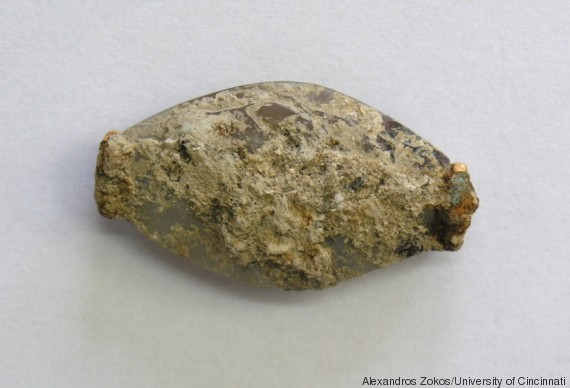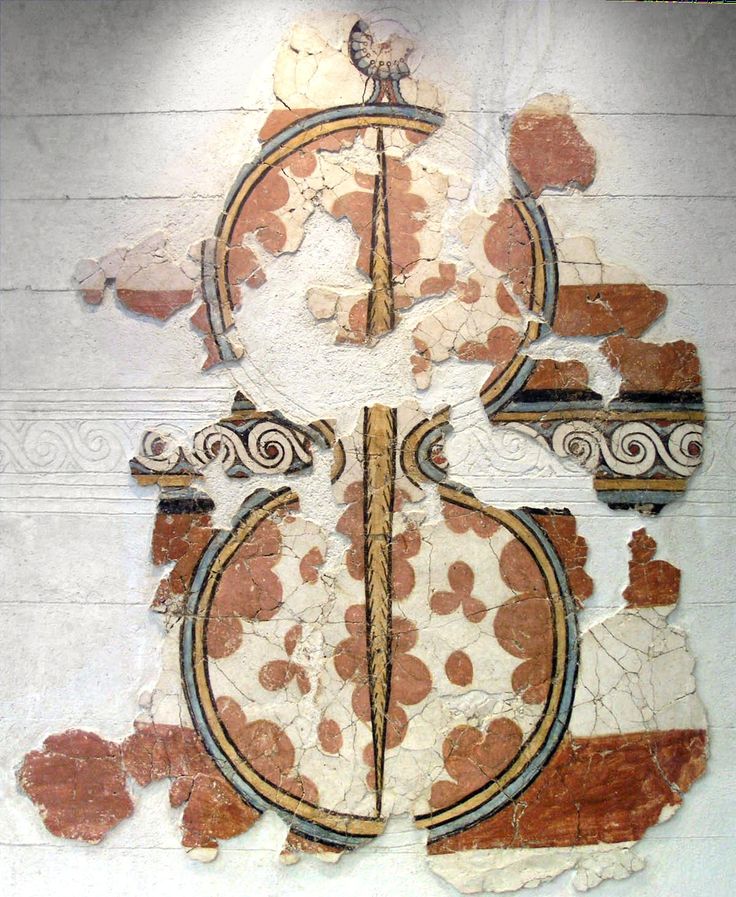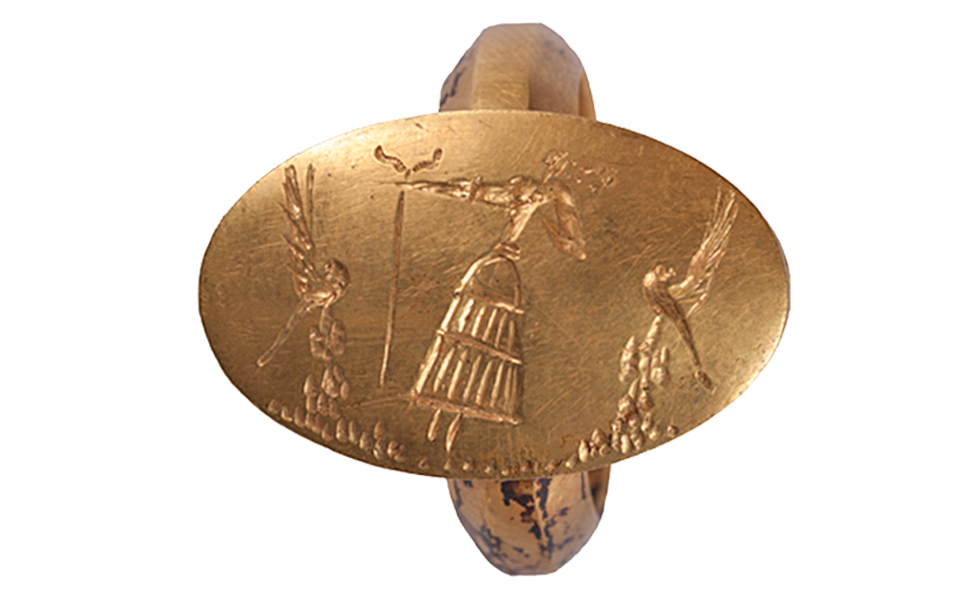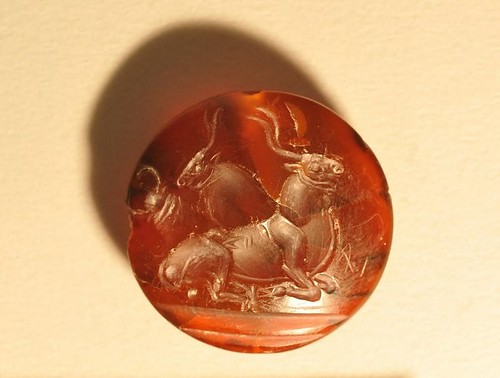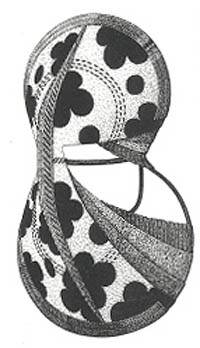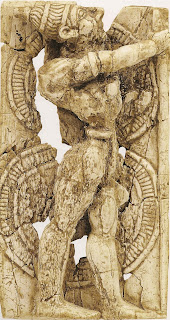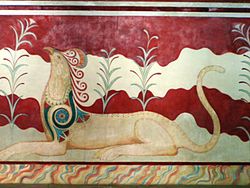Angela
Elite member
- Messages
- 21,823
- Reaction score
- 12,329
- Points
- 113
- Ethnic group
- Italian
I agree with the authors of the article. The artistry in this probably Minoan produced carving equals the work of the great Renaissance masters.
See:
https://www.nytimes.com/2017/11/06/...-warrior-archaeology-homer.html?smid=tw-share
"The seal stone’s image, a striking depiction of one warrior in battle with two others, is carved in remarkably fine detail, with some features that are barely visible to the naked eye. The image is easier to appreciate in a large-scale drawing of the original. “The detail is astonishing, especially given the size. Aesthetically, it’s a masterpiece of miniature art,” said John Bennet, director of the British School at Athens, an archaeological institute. “The stunning combat scene on the seal stone, one of the greatest masterpieces of Aegean art, bears comparison with some of the drawings in the Michelangelo show now at the Metropolitan Museum of Art,” said Malcolm H. Wiener, an expert on Aegean prehistory and a trustee emeritus of the Met."
"The seal stone presents two mysteries. One is how and why it was engraved in such detail. The other is whether its battle scene, strongly evocative of those in Homer’s “Iliad” and “Odyssey,” depicts an event that contributed to the oral tradition behind the works of Homer.The seal stone’s owner, known as the Griffin Warrior after the mythical animal depicted in his grave, was buried around 1450 B.C. He lived at a critical period when the Minoan civilization of Crete was being transferred to cities of the Greek mainland.
Local chieftains, as the Griffin Warrior may have been, used precious items from Crete to advertise their membership in the Greek-speaking elite of the incipient Mycenaean civilization, the first on mainland Europe. Their descendants, a century or so later, built the great palaces at Pylos, Mycenae and Tiryns, places mentioned by Homer.
Dr. Davis and Dr. Stocker believe that the seal stone, like other objects in the Griffin Warrior’s grave, was made on Crete. Work of such quality was not being produced anywhere on the Greek mainland at the time. The detail is so fine that it seems the engraver would have needed a magnifying glass, as would admirers of his work.
Yet no magnifying implements have been found on Crete from this era. Perhaps the engraver was nearsighted, the two archaeologists suggest."
"The seal, carved on a hard stone known as agate, shows a victorious hero slaying an adversary while a third warrior lies dead in the foreground. The seal stone is mounted so that it can worn on the wrist, and indeed the hero is wearing just such an item, as if it were a wristwatch.
The two defeated warriors seem to belong to the same group, because both are wearing patterned kilts whereas the hero sports a codpiece. The scene evidently represents some event that would have been familiar to the Minoans who made the seal stone and to the Griffin Warrior’s community."
"“We’re not saying this is a representation from Homer,” Dr. Stocker said of the tableau on the seal stone, while admitting it would be “fun to believe” the hero is Achilles. Rather, the image “is part of a cycle of stories familiar to both Mycenaeans and Minoans.”"


We've discussed him and the tomb before:
https://www.eupedia.com/forum/threa...-of-southern-Greece?highlight=Griffin+warrior
See:
https://www.nytimes.com/2017/11/06/...-warrior-archaeology-homer.html?smid=tw-share
"The seal stone’s image, a striking depiction of one warrior in battle with two others, is carved in remarkably fine detail, with some features that are barely visible to the naked eye. The image is easier to appreciate in a large-scale drawing of the original. “The detail is astonishing, especially given the size. Aesthetically, it’s a masterpiece of miniature art,” said John Bennet, director of the British School at Athens, an archaeological institute. “The stunning combat scene on the seal stone, one of the greatest masterpieces of Aegean art, bears comparison with some of the drawings in the Michelangelo show now at the Metropolitan Museum of Art,” said Malcolm H. Wiener, an expert on Aegean prehistory and a trustee emeritus of the Met."
"The seal stone presents two mysteries. One is how and why it was engraved in such detail. The other is whether its battle scene, strongly evocative of those in Homer’s “Iliad” and “Odyssey,” depicts an event that contributed to the oral tradition behind the works of Homer.The seal stone’s owner, known as the Griffin Warrior after the mythical animal depicted in his grave, was buried around 1450 B.C. He lived at a critical period when the Minoan civilization of Crete was being transferred to cities of the Greek mainland.
Local chieftains, as the Griffin Warrior may have been, used precious items from Crete to advertise their membership in the Greek-speaking elite of the incipient Mycenaean civilization, the first on mainland Europe. Their descendants, a century or so later, built the great palaces at Pylos, Mycenae and Tiryns, places mentioned by Homer.
Dr. Davis and Dr. Stocker believe that the seal stone, like other objects in the Griffin Warrior’s grave, was made on Crete. Work of such quality was not being produced anywhere on the Greek mainland at the time. The detail is so fine that it seems the engraver would have needed a magnifying glass, as would admirers of his work.
Yet no magnifying implements have been found on Crete from this era. Perhaps the engraver was nearsighted, the two archaeologists suggest."
"The seal, carved on a hard stone known as agate, shows a victorious hero slaying an adversary while a third warrior lies dead in the foreground. The seal stone is mounted so that it can worn on the wrist, and indeed the hero is wearing just such an item, as if it were a wristwatch.
The two defeated warriors seem to belong to the same group, because both are wearing patterned kilts whereas the hero sports a codpiece. The scene evidently represents some event that would have been familiar to the Minoans who made the seal stone and to the Griffin Warrior’s community."
"“We’re not saying this is a representation from Homer,” Dr. Stocker said of the tableau on the seal stone, while admitting it would be “fun to believe” the hero is Achilles. Rather, the image “is part of a cycle of stories familiar to both Mycenaeans and Minoans.”"


We've discussed him and the tomb before:
https://www.eupedia.com/forum/threa...-of-southern-Greece?highlight=Griffin+warrior







